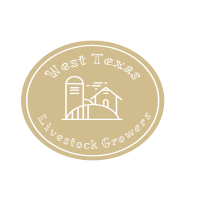 What does weaning success or failure mean to you? This is a tough question to answer because different people will have different answers to this. They can be as varied as the operations that raise cattle.
What does weaning success or failure mean to you? This is a tough question to answer because different people will have different answers to this. They can be as varied as the operations that raise cattle.
Though there may be different ideas on how to wean the goal is all the same. That is to wean every calf you have with the minimum loss to your calf crop. In order to do this you will need to get that calf started on the right foot. The first 30-45 days after weaning are the most stressful in that calf’s life. To be able to make it a smooth transition you will need to avoid making these 3 mistakes.
No weaning plan in place
Many people when it comes to weaning do not have a plan in place. They just pick a day with the best weather and just “wing it”. This strategy may work some times but it does not work the majority of the time.
As anyone who has worked cattle for any period of time will tell you that things tend to not go smoothly. There is always a problem that will come up. It can be not having enough feed, or not having the right amount of vaccines available.
Develop a flexible plan at least 1 month in advance of weaning time. This will give you time to order any feed or medications that you may need. It will also give you time to inspect your facilities and do any repairs. Nothing is more frustrating than to have a calf break through a fence or gate and hurt themselves.
The goal here is to have it planned out so you can get the calf into the next stage of production in the least stressful way possible. Speaking of taking care of your facilities….
Weaning facilities are not ready
The facilities that you are going to use should be able to keep a calf from getting back to it’s mother. Or keeping the mother from getting to the calf for that matter.
The calf is already going through a stressful time being taken from an environment that it is use to and being thrown into a completely new environment. You need to give calves a stress-free space with plenty of room and grass. The idea behind this is that since they have spent the first part of their life out in the pasture it is giving them a somewhat familiar surrounding.
Many times producers put the feed bunks where it is easier for them to fill it and not where it would be better for the calf. The general rule of thumb here is that you will want to place the bunks perpendicular to the outside fence. This is so when the calf is pacing around it will run into the feeder thus increases the chances of them beginning to eat and put weight on.
The placement of the water trough in the pen is also very important. Like the feed bunk you will want to place them on the outside perimeter of the pen so they will run into it. One tip is that if your cattle get their water from a trough then you may want to use the same type of trough in your weaning pen. This will help because it is something the calf is familiar with and knows that it can get water from it.
Calf’s nutritional needs are not properly met
The calf is already having a stressful enough time having been taken from an environment it is comfortable with and putting it in a new environment without the security of it’s momma. It is never a good idea to just start them off with a feed that they are unfamiliar with.
The first problem with this is that they are less likely to eat it since they don’t know it. Introducing a new feed right off the bat can also cause different types of digestive problems as well. According to a study done by the Iowa Beef Center it takes 1-2 weeks for the microbes in the rumen to adjust to new feeds.
When they are just arriving to the pen provide them with something that they are familiar with such as creep feed if you provided it in the pasture before hand. I mentioned about some of the pros and cons of creep feeding here.
You can start off with like a 90/10 mixture of say forage and grain, or whatever they are familiar with and what you want them to eventually be eating. Then every few days you can decrease the original feed and increase the over in steps till they are eating what you want them to.
Review
Weaning can be a stressful time for both producer and calf. So in order to make the transition smoother try to avoid these common mistakes
- No plan in place
- Weaning facilities are not ready and in working order
- The calf’s nutritional needs are being properly met



